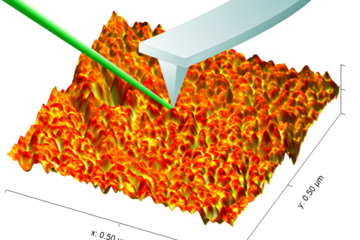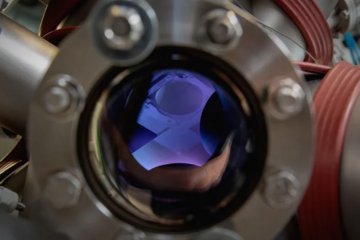All genres
81.
Thesis - PhD
Characterization of aerosols and nanoparticles released during various indoor and outdoor human activities. Dissertation, RWTH Aachen University (2018)
82.
Thesis - PhD
Phase nucleation through confined spinodal fluctuations at crystal defects in Fe–Mn alloys. Dissertation, RWTH, Aachen, Germany (2018)
83.
Thesis - PhD
Nano-scale investigation of the degradation mechanism of multilayer protective coating for precision glass molding. Dissertation, RWTH Aachen, Aachen, Germany (2018)
84.
Thesis - PhD
Synthesis and in-depth electron microscopic characterization of solvothermally grown copper indium sulfide thin films. Dissertation, RWTH Aachen, Aachen, Germany (2018)
85.
Thesis - PhD
Solid state dewetting phenomena of aluminum thin films on single crystalline sapphire. Dissertation, RWTH Aachen University (2017)
86.
Thesis - PhD
The Influence of Post-Growth Heat Treatments and Etching on the Nanostructure and Properties of Rutile TiO2 Nanowires. Dissertation, RWTH Aachen, Aachen, Germany (2017)
87.
Thesis - PhD
Investigation of Sputtered Mo2BC Hard Coatings: Correlation of Nanostructure and Mechanical Properties. Dissertation, RWTH Aachen, Aachen, Germany (2017)
88.
Thesis - PhD
Element redistribution and defect formation at the CdS/CIGS interface. Dissertation, RWTH Aachen, Aachen, Germany (2017)
89.
Thesis - PhD
A Study on the Microstructure Formation Mechanisms and Functional Properties of CdTe Thin Film Solar Cells Using Correlative Electron Microscopy and Atomistic Simulations. Dissertation, RWTH Aachen, Aachen, Germany (2017)
90.
Thesis - PhD
Grain boundary segregation in multicrystalline Silicon studied by correlative microscopy. Dissertation, RWTH Aachen, Aachen, Germany (2017)
91.
Thesis - PhD
κ-carbide in a high-Mn light-weight steel: precipitation, off-stoichiometry and deformation. Dissertation, RWTH Aachen, Aachen, Germany (2017)
92.
Thesis - PhD
Mechanical properties in metallic glasses and their deformation mechanisms. Dissertation, RWTH Aachen, Aachen, Germany (2016)
93.
Thesis - PhD
Martensitic Stainless Steel: Evolution of Austenite during Low Temperature Annealing and Design of Press Hardening Alloys. Dissertation, RWTH Aachen, Aachen, Germany (2016)
94.
Thesis - PhD
Transformation Phenomena during Quenching and Partitioning Heat Treatment. Dissertation, RWTH Aachen, Aachen, Germany (2016)
95.
Thesis - PhD
Microstructure design via site-specific control of recrystallization and nano-precipitation. Dissertation, RWTH Aachen, Aachen, Germany (2016)
96.
Thesis - PhD
Investigation of intermetallic layer formation in dependence of process parameters during the thermal joining of aluminium with steel. Dissertation, RWTH Aachen, Aachen, Germany (2016)
97.
Thesis - PhD
Stiff and damage-tolerant metallic glasses. Dissertation, RWTH Aachen, Aachen, Germany (2015)
98.
Thesis - PhD
Thermal stability of AlN/CrN superlattice hard coatings. Dissertation, RWTH Aachen University, Aachen, Germany (2015)
99.
Thesis - PhD
Elastic and plastic properties of fcc Fe–Mn based alloys. Dissertation, RWTH Aachen, Aachen, Germany (2013)
100.
Thesis - PhD
On the growth and mechanical properties of non-oxide perovskites and the spontaneous growth of soft metal nanowhiskers. Dissertation, RWTH Aachen, Aachen, Germany (2013)











